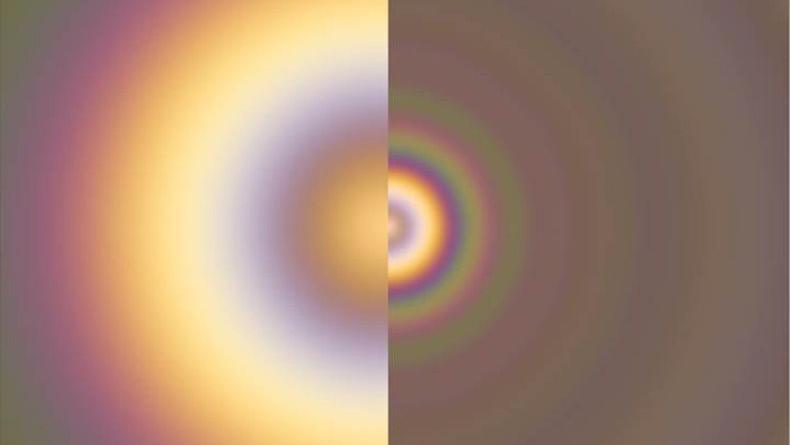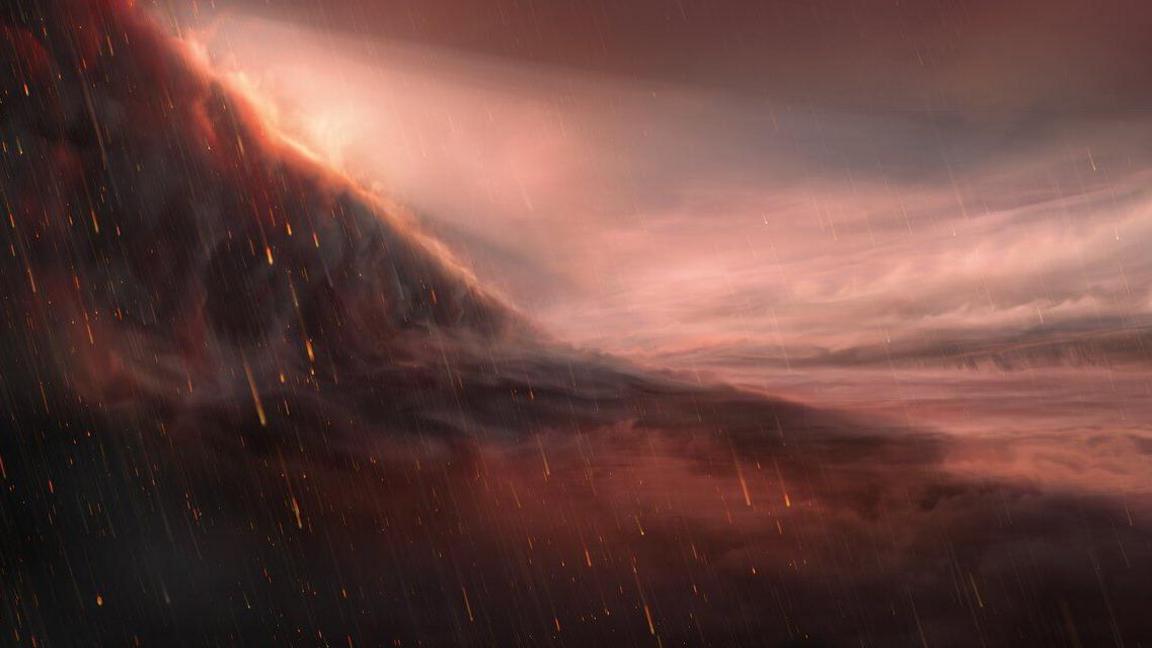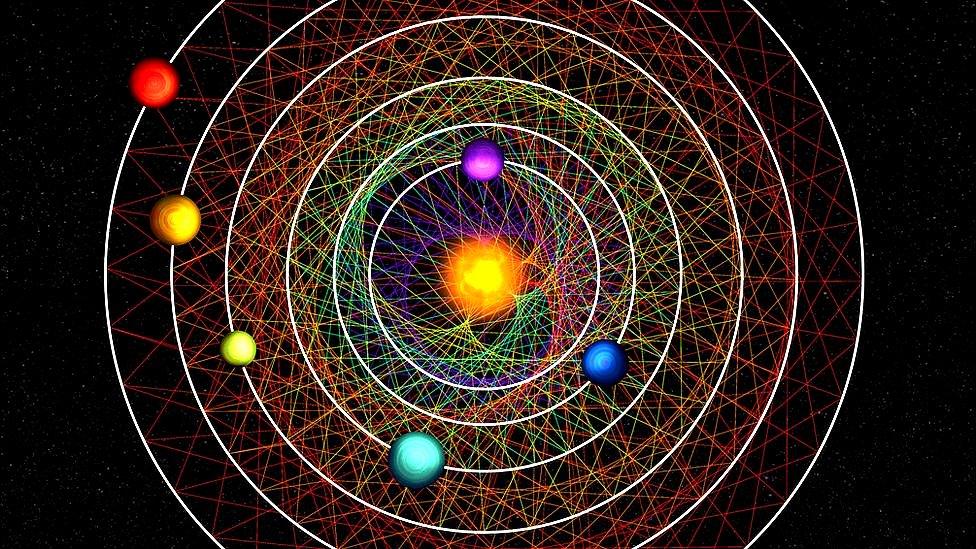Rainbow-like pattern spotted on planet outside solar system

An artist's impression of the 'glory effect' on the planet
- Published
Signs of mysterious rainbow-like patterns have been detected on a planet outside the solar system, astronomers have said.
The phenomenon, named the glory effect, is often seen on Earth and has only been found once on another planet, Venus.
It is thought to be beaming from an ultra-hot planet similar to Jupiter, called WASP-76b, some 637 light-years away, the astronomers, including those at the University of Warwick, said.
"There's a reason no glory has been seen before outside our solar system – it requires very peculiar conditions," Olivier Demangeon, from the Institute of Astrophysics and Space Sciences in Portugal, said.
The effect occurs when light passes between a narrow opening, like water droplets in clouds, causing it to diffract and create ring-link patterns.

Simulated views of the effect on Venus (left) and Earth (right)
A small spacecraft called Cheops monitored the planet over three years which led to the discovery of the glory effect.
If the phenomenon is confirmed with future studies, it could help astronomers understand more about exoplanets and how habitable they could be.
Scientists said NASA’s James Webb Space Telescope (JWST) could be used to confirm the glory effect.

An artist's impression of WASP-76b's night side which has endless darkness
WASP-76b, in the Pisces constellation, was discovered in 2013 and is almost double the size of Jupiter.
While one side of the planet always faces the sun, reaching temperatures of 2400C, the other is masked in endless darkness.
Follow BBC West Midlands on Facebook, external, X,, external and Instagram, external, Send your story ideas to: newsonline.westmidlands@bbc.co.uk, external
Related topics
- Published3 April 2024

- Published3 April 2024

- Published29 November 2023

- Published3 October 2023
